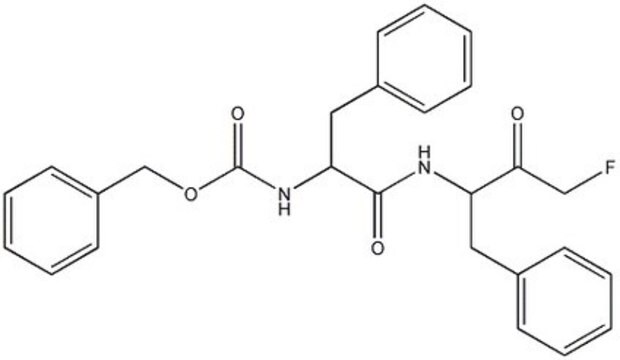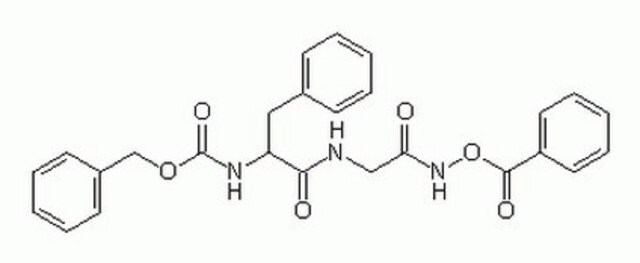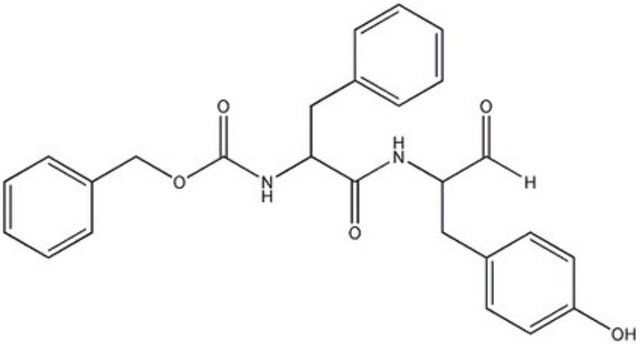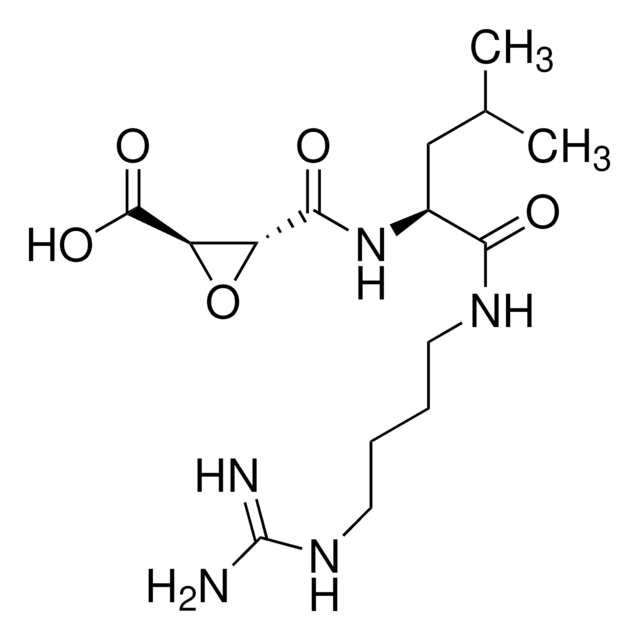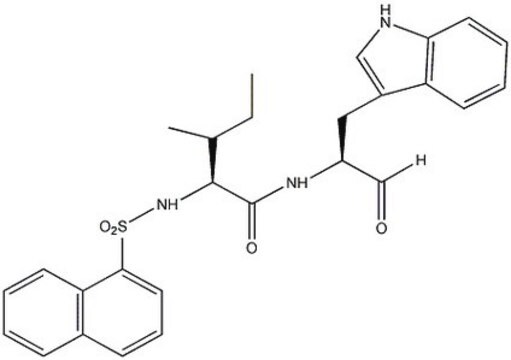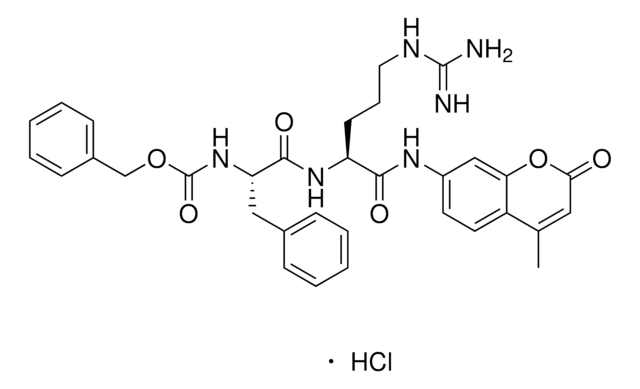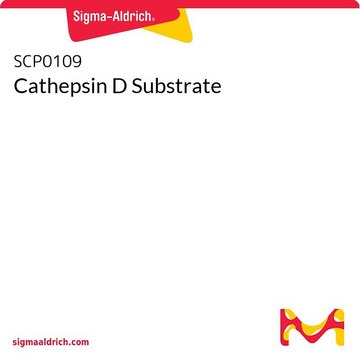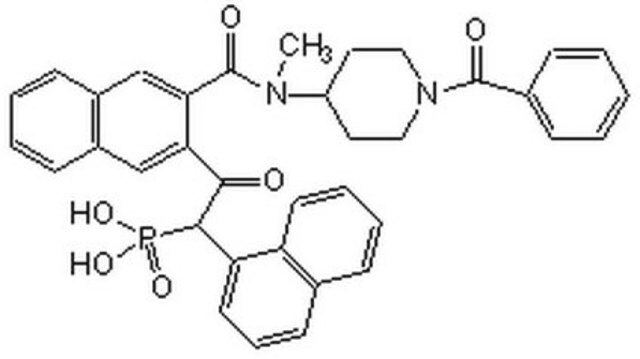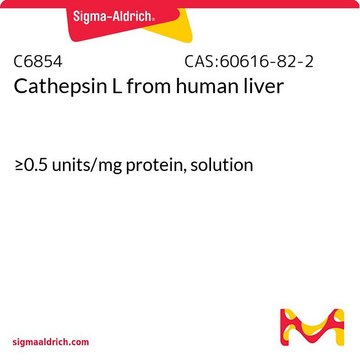About This Item
Wzór empiryczny (zapis Hilla):
C35H59N11O5
Masa cząsteczkowa:
713.91
Kod UNSPSC:
12352200
NACRES:
NA.32
Polecane produkty
Próba
≥95% (HPLC)
Formularz
lyophilized
skład
Peptide Content, ≥55%
warunki przechowywania
protect from light
temp. przechowywania
−20°C
Amino Acid Sequence
Arg-Lys-Leu-Leu-Trp-NH2
Opis ogólny
Cathepsin L Inhibitor is a histone H3-processing enzyme. It is important for maintaining epidermal homeostasis, regular hair follicle morphogenesis and cycling. Cathepsin L is involved in protein degradation. It might regulate normal functioning of the immune system. Cathepsin L regulates the death of macrophages, necrotic core formation and development of atherosclerotic plaque instability.
Zastosowanie
Cathepsin L is a lysosomal cysteine proteinase that metabolizes collagens and elastins. The roles and activity of Cathepsin L can be studied with the aid of peptide inhibitors such as the pentapeptide amide RKLLW-NH2 (Arg-Lys-Leu-Leu-Trp-NH2).
Ta strona może zawierać tekst przetłumaczony maszynowo.
Kod klasy składowania
11 - Combustible Solids
Klasa zagrożenia wodnego (WGK)
WGK 3
Temperatura zapłonu (°F)
Not applicable
Temperatura zapłonu (°C)
Not applicable
Wybierz jedną z najnowszych wersji:
Certyfikaty analizy (CoA)
Lot/Batch Number
Nie widzisz odpowiedniej wersji?
Jeśli potrzebujesz konkretnej wersji, możesz wyszukać konkretny certyfikat według numeru partii lub serii.
Masz już ten produkt?
Dokumenty związane z niedawno zakupionymi produktami zostały zamieszczone w Bibliotece dokumentów.
Klienci oglądali również te produkty
Protease signalling: the cutting edge
Turk B, et al.
The Embo Journal, 31(7), 1630-1643 (2012)
Cathepsin L expression and regulation in human abdominal aortic aneurysm, atherosclerosis, and vascular cells
Liu J, et al.
Atherosclerosis, 184(2), 302-311 (2006)
Cathepsin L is significantly associated with apoptosis and plaque destabilization in human atherosclerosis
Li W, et al.
Atherosclerosis, 202(1), 92-102 (2009)
V Turk et al.
The EMBO journal, 20(17), 4629-4633 (2001-09-05)
From their discovery in the first half of the 20th century, lysosomal cysteine proteases have come a long way: from being the enzymes non-selectively degrading proteins in lysosomes to being those responsible for a number of important cellular processes. Some
A Brinker et al.
European journal of biochemistry, 267(16), 5085-5092 (2000-08-10)
By screening a combinatorial pentapeptide amide collection in an inhibition assay, we systematically evaluated the potential of 19 proteinogenic amino acids and seven nonproteinogenic amino acids to serve as building blocks for inhibitors of human cathepsin L. Particularly efficient were
Nasz zespół naukowców ma doświadczenie we wszystkich obszarach badań, w tym w naukach przyrodniczych, materiałoznawstwie, syntezie chemicznej, chromatografii, analityce i wielu innych dziedzinach.
Skontaktuj się z zespołem ds. pomocy technicznej